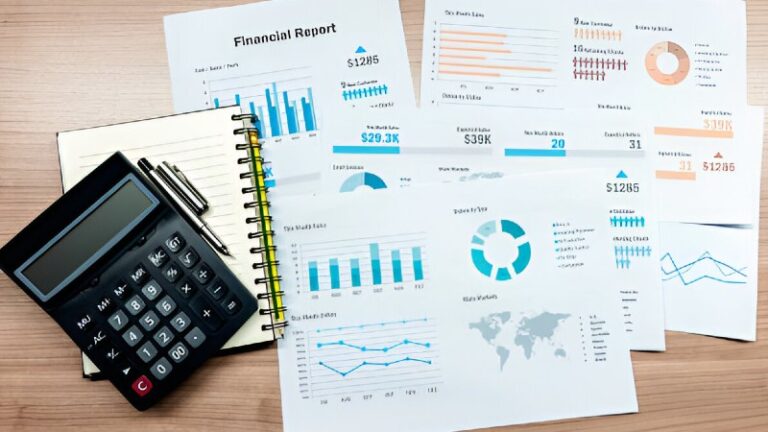Running a successful business requires more than passion and hard work—it requires data-driven decisions. Financial metrics are the compass that guides entrepreneurs toward profitability, sustainability, and growth. Yet, many business owners either track too many numbers or overlook the ones that matter most.
Why Financial Metrics Matter
Financial metrics are more than numbers—they’re indicators of health, efficiency, and potential. They help you answer crucial questions:
- Is my business truly profitable, or just generating revenue?
- How sustainable is my growth rate?
- Do I have enough cash flow to reinvest and weather downturns?
- Would a lender or investor see my business as a safe bet?
By monitoring the right metrics consistently, business owners gain the foresight to correct problems early and seize opportunities with confidence.
10 Essential Financial Metrics to Track
Below are ten financial metrics grouped into profitability, liquidity, efficiency, and growth. Together, they paint a complete picture of your business’s financial health.
1. Revenue and Revenue Growth Rate
Revenue is your business’s top-line income, but growth rate is what reveals sustainability. For example, if your annual revenue is $1M and grows steadily at 8% per year, it signals a scalable business model. Lenders, investors, and stakeholders always look at both revenue and its trajectory.
| Metric | Formula | Why It Matters |
|---|---|---|
| Revenue Growth Rate | ((Current Year Revenue – Previous Year Revenue) ÷ Previous Year Revenue) × 100 | Shows long-term scalability and sustainability. |
2. Net Profit Margin
Revenue means little without profit. Net Profit Margin measures the percentage of revenue that becomes profit after all expenses:
Net Profit ÷ Revenue × 100
For instance, a company with $500,000 in revenue and $75,000 net profit has a 15% margin. This shows how efficiently a business converts sales into actual earnings.
3. Gross Profit Margin
Gross Profit Margin focuses on the profitability of core operations by comparing revenue to the cost of goods sold (COGS). Businesses with healthy margins (e.g., >40% in software, >20% in retail) demonstrate strong pricing power and operational control.
4. Operating Cash Flow
Cash flow—not profit—keeps businesses alive. Operating Cash Flow reflects how much cash remains after covering operating expenses like payroll and rent. Positive cash flow ensures stability and flexibility in making investments or covering debt obligations.
5. Customer Acquisition Cost (CAC) vs. Customer Lifetime Value (CLV)
Acquiring customers is costly, but retaining them is profitable. These paired metrics reveal efficiency:
- CAC: Total marketing and sales spend ÷ Number of new customers acquired.
- CLV: Average revenue per customer × Average retention time.
A healthy business model maintains a CLV at least 3x higher than CAC. For example, if it costs $200 to acquire a new customer but each customer generates $1,000 in lifetime revenue, your acquisition strategy is sustainable.
6. Debt-to-Equity Ratio
This ratio compares borrowed capital to owner equity. A Debt-to-Equity Ratio below 1 indicates more equity than debt, which lenders and investors view as low-risk. High ratios, however, may limit financing opportunities and indicate potential over-leverage.
7. Debt Service Coverage Ratio (DSCR)
If your business is considering financing, DSCR is critical. It measures whether you generate enough income to cover debt obligations:
Operating Income ÷ Debt Payments
A DSCR above 1.25 is generally preferred by lenders, signaling you can comfortably handle loan repayments.
8. Accounts Receivable Turnover
Strong sales mean little if customers don’t pay on time. Accounts Receivable Turnover shows how efficiently you collect payments. A low turnover (slow collections) ties up cash flow, while a higher turnover indicates healthy liquidity.
9. Inventory Turnover Ratio
For product-based businesses, Inventory Turnover reveals how quickly you sell and replace stock. A low ratio signals overstocking or weak demand, while a high ratio indicates efficient sales and minimal cash tied up in inventory.
10. Quick Ratio
The Quick Ratio evaluates whether you can meet short-term liabilities without selling inventory. It’s calculated as:
(Cash + Accounts Receivable + Marketable Securities) ÷ Current Liabilities
A ratio above 1 signals strong short-term financial health.
Putting the Metrics Into Practice
Tracking metrics without action is a missed opportunity. Here are some ways to apply them strategically:
- Identify Bottlenecks: If cash flow is strong but profit margins are thin, review pricing and costs.
- Plan for Financing: Monitor DSCR and Debt-to-Equity before applying for loans to improve approval odds.
- Optimize Marketing: Compare CAC against CLV to refine your customer acquisition strategy.
- Enhance Efficiency: Use receivable and inventory turnover metrics to tighten cash cycles.
Example
Consider a retail business with the following metrics:
| Metric | Value | Insight |
|---|---|---|
| Revenue Growth | +6% YoY | Sustainable but room to improve with stronger marketing. |
| Net Profit Margin | 12% | Healthy margin, indicating efficient operations. |
| DSCR | 1.4 | Safe level for loan approval. |
| Inventory Turnover | 4x annually | Average performance; may need faster product cycles. |
This kind of analysis enables owners to target specific areas for improvement while maintaining overall financial health.
Beyond the Numbers
What many articles miss is that financial metrics are not just for compliance or financing—they’re decision-making tools. The real value lies in connecting these metrics to strategy:
- Revenue Growth informs marketing budgets.
- Profit Margins guide pricing strategies.
- Cash Flow shapes hiring and expansion decisions.
- Debt Ratios influence risk management policies.
By embedding financial metrics into everyday decision-making, businesses shift from reactive management to proactive growth leadership.
Conclusion
Tracking the right financial metrics is not about crunching numbers for accountants—it’s about giving business owners a clear lens into performance, resilience, and opportunity. By monitoring profitability, liquidity, efficiency, and growth metrics consistently, you’ll not only build financial stability but also position your business for smarter decisions, stronger investor confidence, and long-term success.
Next Step: Start by selecting 3–4 key metrics from this list that align with your immediate goals, then expand your tracking as your business grows. Numbers don’t just reflect history—they shape your future.
Frequently Asked Questions (FAQs)
What are financial metrics and why are they important?
Financial metrics are quantitative measures that indicate the financial health, efficiency, and profitability of a business. They help business owners make informed decisions, track growth, and plan for the future.
Which financial metrics should small business owners track first?
Small business owners should start with revenue, net profit margin, cash flow, and customer acquisition cost (CAC) to understand profitability, liquidity, and growth efficiency.
How often should financial metrics be reviewed?
Financial metrics should be reviewed at least monthly for operational insights, and quarterly for strategic planning. Some metrics, like cash flow, may require weekly monitoring for fast-paced businesses.
Can tracking metrics improve my chances of getting a loan?
Yes. Metrics like DSCR, debt-to-equity ratio, and revenue growth provide lenders with evidence of financial stability and repayment capability, improving your loan approval chances.
How do I balance too many metrics without getting overwhelmed?
Focus on 3–5 key metrics aligned with your current business goals. As your business grows, gradually incorporate additional metrics to monitor efficiency, profitability, and growth.
Are financial metrics industry-specific?
While some metrics are universal (revenue, profit, cash flow), others may vary by industry. For example, inventory turnover is crucial for retail, while member retention is more relevant for subscription-based businesses.


